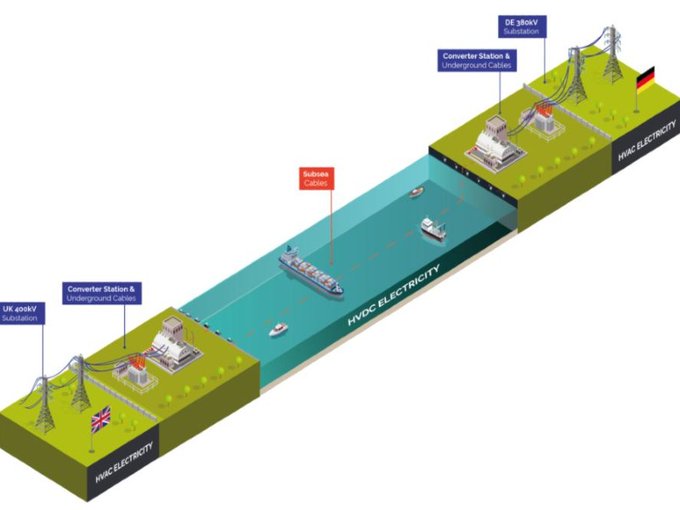The project services for NeuConnect Interconnector that will directly link the UK and German electricity grids for the first time are to be provided by a joint venture. Arup, a British multinational professional services firm that provides design, engineering, architecture, planning, and advisory services across every aspect of the built environment, has entered into a joint venture (JV) with Fichtner, a German leading, independent engineering and consultancy enterprise active in the sectors of energy and infrastructure
The JV will provide project and commercial management, SHEQ and consenting oversight, as well as a comprehensive multidisciplinary technical team delivering an owner’s engineer/client representative role for the onshore and offshore elements of the project.
Remarks on the JV
Speaking on the JV, Ian Webb, Associate Director, Advisory Services at Arup, said that they were excited to be working with Fichtner on the NeuConnect Submarine Interconnector project adding that they recognize the strategic importance of this investment and that both Arup and Fichtner are highly motivated to bring the best of their skills, capability and experience.
“This new delivery phase contract builds on the services provided during the successful development phase and is one of the significant energy projects we are supporting as we support the Energy Transition globally,” explained Webb.
NeuConnect CEO Arnaud Grévoz, on the other hand, said that the Arup-Fichtner Joint Venture will be an essential partner in the NeuConnect Submarine Interconnector project, helping the developer of the NeuConnect interconnector manage the delivery of this vital new piece of energy infrastructure.
“As one of the world’s largest interconnectors, NeuConnect will be a complex project, so the skills and expertise of Arup and Fichtner will play a crucial role in delivering the project on time, on budget and to the highest quality,” concluded Grévoz.
Reported earlier
April 2022
Contracts Awarded for NeuConnect UK-Germany Undersea Interconnector Project

Key contracts worth over £1.5 billion ($1.95 billion) have been awarded for the NeuConnect project, a major interconnector centred on 725 kilometres long subsea cables that will allow 1.4 gigawatts of power to flow in both directions between the United Kingdom and Germany, Europe’s two major economies.
Contracts for the project, which is referred to as the “invisible energy highway” and “the first direct link between the UK and German energy markets” have been awarded for cabling work and converter stations. Siemens Energy was given the contract for the latter, which would include the design and building of locations in Germany and the United Kingdom, according to NeuConnect.
The interconnector will allow Britain to “plug into Germany’s extensive energy infrastructure, particularly its major renewable energy sources.” According to the German government, “the new link with Britain will assist reduce current bottlenecks where wind turbines are regularly turned down due to an excess of renewable energy being generated.”
According to announcements, the financial close on NeuConnect is scheduled for the “coming weeks,” allowing construction to begin in 2022.
NeuConnect to help connect the United Kingdom to the rest of Europe
NeuConnect is part of a planned and undergoing project whose main is to help connect the United Kingdom to the rest of Europe. These projects include a 450-mile underwater cable connecting the United Kingdom and Norway, allowing them to share renewable energy, which commenced commercial operations last year. The North Sea Link, as it is known, is intended to utilize Norway’s hydropower and the United Kingdom’s wind energy resources.
Also Read: Xlinks Solar & Wind Power Project Updates, Morocco
Back in the United Kingdom, proposals for a multibillion-pound “underwater energy superhighway” that would allow electricity generated in Scotland to be delivered to the northeast of England were unveiled in 2020. The Eastern Link project, which is still in its early phases, will focus on the development of a pair of high-voltage direct-current cables with a total capacity of 4 GW.

Leave a Reply